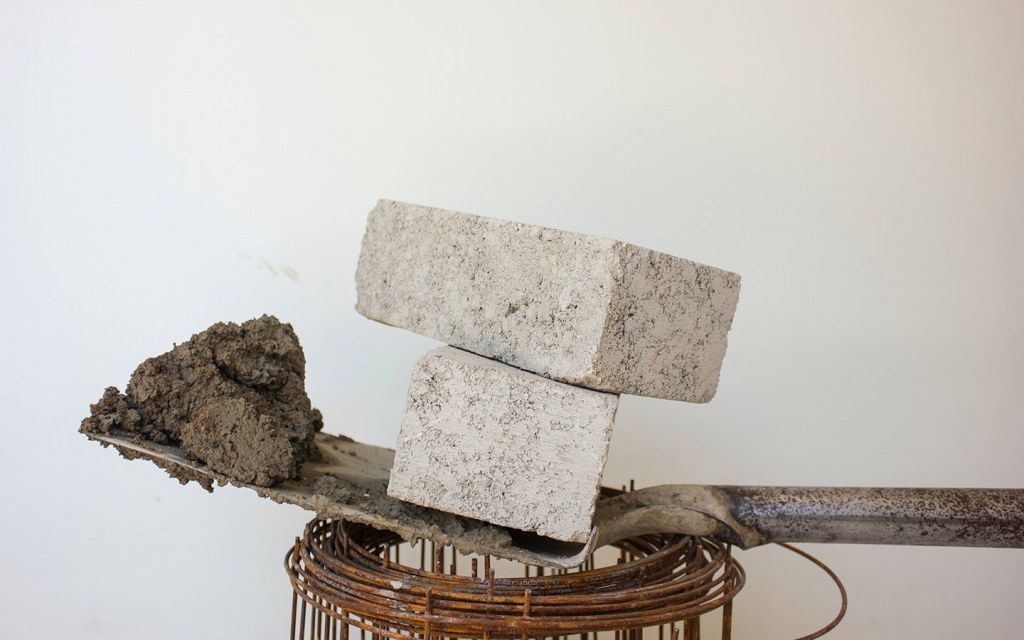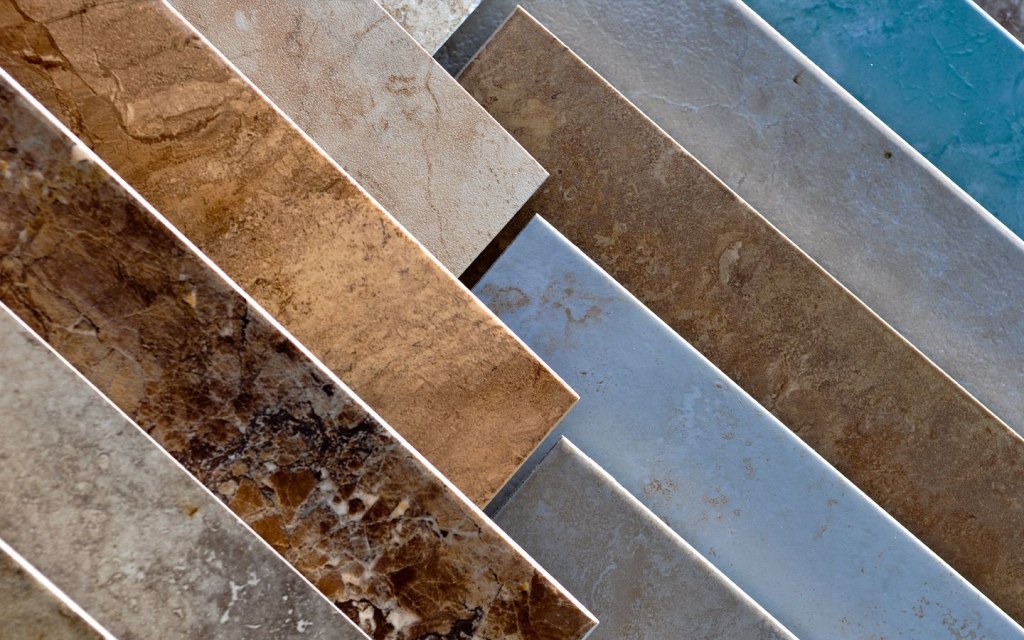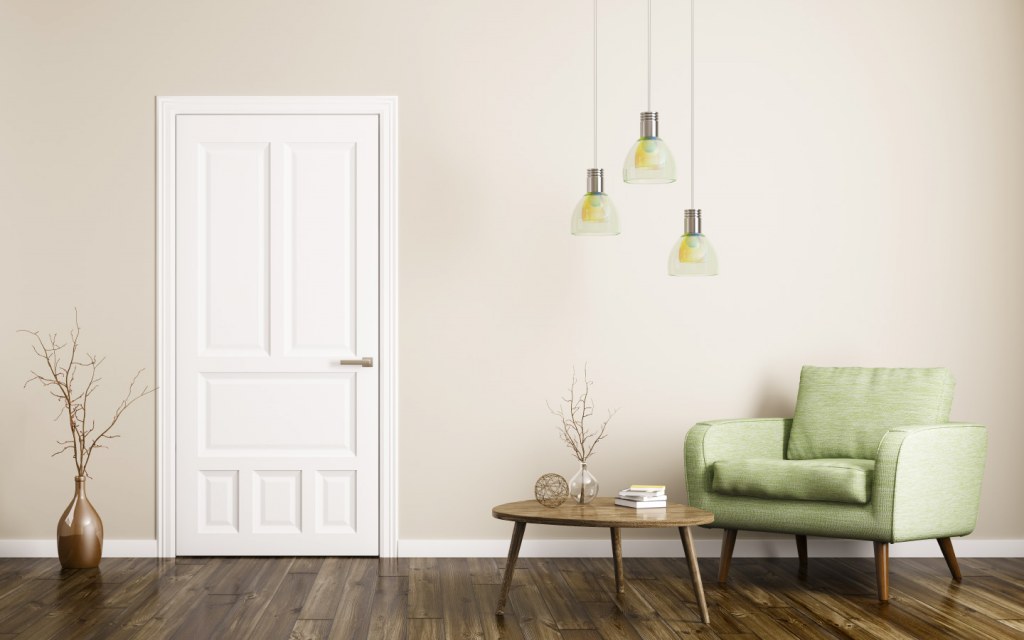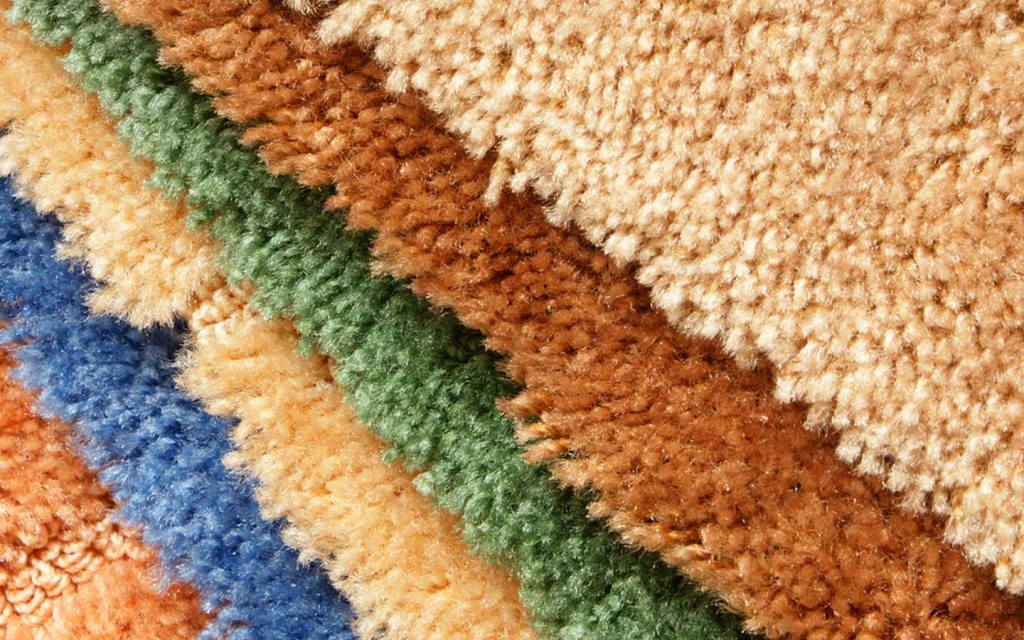Most Popular Flooring Options for Your Basement
The basement in your house has the potential to be much more than a dust-filled storage space that is seldom cleaned or visited. Depending on the size and orientation of your property, you can utilise this extra square footage to create a game room where the kids can hang out in the evening or transform it into a cosy home theatre for the entire family. However, the first step to giving this space a complete makeover is to choose the right flooring material.
Therefore, to help you turn your dull and drab basement into one of the most interesting parts of your house, we have put together some top basement flooring ideas along with their pros and cons. Though before we delve into the properties of these materials, let’s quickly go over the main things you should keep in mind while renovating the floors of your basement.
THINGS TO CONSIDER WHILE CHOOSING BASEMENT FLOORING MATERIALS

Here are a few things homeowners must consider before breathing a new life into their basements.
PURPOSE AND FOOTFALL
To find suitable flooring options for basements, you must first decide the purpose of this space and the footfall it is likely to receive. Areas that attract a higher number of people will most likely require a warmer and more comfortable surface that is resistant to general wear and tear.
On the other hand, if you are planning to turn your basement into a home office or a study room, you may be able to work with materials that are more aesthetically pleasing and add value to your home.
There are also several other ways to make the most of your basement space. For instance, you can turn it into an indoor gym, a guest bedroom, a secondary living area, a library, or a laundry and utility area.
DAMAGE REPAIRS
Before you start installing new floors in your basement, you must first make sure the original concrete floor is in perfect condition. In case the floor is damaged or has a rough and uneven surface, you should consider repairing it before covering it up with new flooring material.
In addition, please note that you don’t need to hire a professional to fix small cracks in concrete. However, if you believe the crack is a result of water damage or seepage, you may want to hire an expert to inspect your basement.
WATERPROOFING
If your basement gets flooded during every spell of heavy rain or is generally very humid, it is highly recommended to waterproof the space before installing new flooring.
Some of the best DIY ways to waterproof your basement include creating a slanted foundation around the basement, waterproofing the walls using hydraulic cement, repairing leaks in water pipes, using insulating material to cover up the plumbing, and clearing clogged drains.
8 BEST BASEMENT FLOORING IDEAS
Here are some of the most popular flooring options for basements:
CONCRETE FLOORING

If you are planning to use your basement for utilitarian purposes, opting for concrete flooring could be a great decision. It is also inexpensive and won’t put a damper on your budget. Plus, the material has begun gaining acceptance among homeowners due to its versatility and easy availability.
Moreover, concrete is relatively more resistant to moisture and water damage than many other flooring materials widely available in the market. All you have to do is cover the surface of your concrete floor with a coat of waterproofing sealant, which is also easily available at hardware stores.
Last but not least, if you are worried about the aesthetic appeal of your concrete flooring, there are quite a few things you can do to cover up its dull grey tone. For example, you can add a little flair to your basement by painting the concrete. It is among the most inexpensive basement flooring ideas. However, if you want to go a slightly different route, you can consider staining the concrete or going for the textured option. Although the last option may require some DIY work, the result will be undoubtedly brilliant.
Pros of Concrete Flooring
- One of the moisture-hardy flooring options for basements
- Relatively cost-effective
- Requires a little amount of materials for installation
- Does not require homeowners to install a sub-floor
Cons of Concrete Flooring
- Could make the basement feel rather cold during the winter months
- Poor acoustics make it a bad option for those planning to turn the basement into a home theatre
- Installation requires more effort than other basement flooring materials
On a side note, don’t forget to check out our guides on how to stop moisture in a concrete floor and how to repair concrete cracks.
EPOXY FLOORING

Epoxy flooring is also one of the best basement flooring options. Its high-gloss reflective surface can brighten up your space while its resistance to stains and moisture add to its lifespan in your home.
Although it may look like shiny paint at the first glance, epoxy is quite different. It is a unique coating material that is made by combining polymer resins with hardening chemicals. The chemical reaction between these compounds gives epoxy flooring its plastic-like surface while enhancing its durability.
In addition, please note that epoxy flooring is not the same thing as an epoxy coating. While the two sound rather similar, epoxy coatings are thin and consist of two to three layers of the material. Meanwhile, epoxy floors comprise several layers of epoxy coatings, making them a better choice for heavy-traffic areas or spaces prone to moisture.
So, if you are looking for the best basement flooring over concrete that won’t break the bank and enhance the visual appeal of your space, this should be among your top choices.
Pros of Epoxy Flooring
- Easy to clean as it is highly resistant to moisture and stains
- Relatively low maintenance and easy to fix
- Allows homeowners to experiment with different hues and patterns for their flooring
- Does not degrade easily and can withstand heavy traffic
Cons of Epoxy Flooring
- The installation process could be time consuming
- Can be rather slippery in the absence of anti-slip additives
- Can end up peeling and cracking if certain conditions are not met during installation
You can also refer to our guide on how to apply epoxy coating on concrete floors for some DIY inspiration.
SHEET VINYL FLOORING

If concrete and epoxy floorings do not seem like suitable flooring options for basements, you may want to opt for peel-and-stick sheet vinyl flooring. It is a relatively inexpensive flooring material that can upgrade your space without making you go over your budget.
To top it off, it is also rather resilient along with being highly resistant to moisture, which means you won’t have to deal with the musty smell usually associated with basements. Moreover, sheet vinyl flooring helps create a nearly seamless surface, which keeps water from infiltrating the floor underneath.
It is also smooth to touch and a perfect option for those looking to transform this space into an entertainment area, home office, or playroom for your little ones. Furthermore, this flooring material is easy to clean. You can simply sweep it with a broom or a microfibre cloth to get rid of dust.
In addition, vinyl flooring sheets are available in a wide range of colours and patterns, providing homeowners with an opportunity to choose an option that complements their overall home décor theme. However, it is pertinent to mention that while vinyl sheets are water-resistant, the glue that adheres to the floor is not. Therefore, it may be a good idea to coat the subfloor with a waterproof sealant.
Pros of Sheet Vinyl Flooring
- Keeps moisture from seeping through its surface
- Relatively inexpensive
- Vinyl basement flooring is easy to install
- Does not get as cold as concrete flooring
Cons of Sheet Vinyl Flooring
- May not add much value to the basement
- Requires a very clean subfloor for adhesion
- Removing the sheets could be difficult
LUXURY VINYL FLOORING

As the name suggests, luxury vinyl flooring is a more high-end version of peel-and-stick vinyl sheets. This material is also a great combination of resilience and durability, thus making it one of the best basement flooring options for those willing to spend a little extra on their home improvement project.
Moreover, this multi-layered PVC flooring material is installed piece by piece in a floating floor fashion instead of being glued onto the floor. It is also completely waterproof and can mimic a variety of different flooring materials – including hardwood, marble, travertine, and tile. In addition, owing to its thickness, luxury vinyl can also be embossed for additional texture.
It is also important to mention that luxury vinyl basement flooring is available in both tiles and sheets options. So, you can either order it in the form of planks measuring 6 inches x 48 inches or choose 16-inch by 16-inch square-shaped tiles.
In either case, installing luxury vinyl in your basement will certainly add value to your property along with making it look more stylish. You can also choose from an extensive range of hues and designs to find the flooring option that truly speaks to your décor choices.
Pros of Luxury Vinyl Flooring
- More durable than the regular vinyl sheet or tile flooring
- Twice as thick as conventional vinyl flooring, which makes it warmer and more comfortable
- Can replicate the appearance and texture of stones, wood, and other materials
- Easy to install and remove since it does not adhere to the subfloor
Cons of Luxury Vinyl Flooring
- Luxury vinyl is more expensive than regular vinyl flooring
- May not be able to keep moisture at bay during flooding
- Vinyl is largely considered a cheaper option among interior designers and homeowners alike
PORCELAIN OR CERAMIC TILE FLOORING

Choosing the best type of tile for each room in your house can be an arduous task. However, when it comes to selecting the best basement floor tiles, you cannot go wrong with ceramic or porcelain tiles. Not only do they make for excellent waterproof basement flooring, but they are also aesthetically pleasing and do not require any additional treatments.
Given the similarity in their appearances, some people have difficulty telling ceramic and porcelain tiles apart – even though their rates of absorption and density are quite different. Ceramic tiles are made from white or red clay that is fired in a kiln at a high temperature before being coated with a glaze. On the other hand, porcelain tiles are made from very fine clay and are fired at high temperatures. Thus, they have a harder and denser texture. Their water absorption rate is also less than 0.5%.
Both types of tiles are available in a wide variety of colours, sizes, and patterns. They are also easy to install and will not cost you an arm and a leg. Also, did we mention that they are the best basement flooring to prevent mould?
Pros
- Highly resistant to moisture and water damage
- Impervious to rot and mould
- Relatively more durable
- Visually appealing and can add value to your home
Cons
- Can be difficult to remove and replace
- It may require concrete slabs for levelling
- Below-par sound absorption quality
Before we move further, make sure to check out our guide on how to prevent and fix cracked tiles in your home.
ENGINEERED WOOD FLOORING

Is there anything that looks classier than hardwood floors? Probably not.
Despite its beautiful aesthetics, a hardwood floor is rarely a good choice for basements. However, if you want this space to look elegant and luxurious, you can always go for engineering hardwood flooring. It is one of the top basement flooring ideas that functions remarkably well in highly humid and moist environments and remains warm during winter, thus making it comfortable to walk on.
It is also vital to note that most types of engineering hardwood have a waterproof core. Moreover, this flooring often comes with a pre-attached foam pad, which increases underfoot comfort along with reducing noise. To make things even better, the pieces of engineered hardwood usually snap together, making them easy to install and repair when needed. It is also suitable for home gyms, home offices, living spaces, and game rooms.
Along with being durable, this basement flooring material can also add to the resale value of your house.
Pros
- Resistant to a mild amount of moisture
- Brilliant sound absorption qualities
- Looks like real hardwood flooring
- Feels warm and comfortable underfoot
Cons
- Requires some type of subfloor for installation
- More expensive than other basement flooring materials
- Can be difficult to remove in an event of flooding
WALL-TO-WALL CARPETING

In certain situations, installing carpets in basements could be a wonderful idea. After all, they are warm, comfortable, and can add a splash of extravagance to your space. If your space is not prone to an excessive level of moisture, wall-to-wall carpeting could be an ideal flooring option as long as you opt for a solid subfloor system. Alternatively, you can choose to install carpet squares in your basement for a similar visual effect.
Carpeted basements can also be a good option for those planning to transform their space into a second living room or a playroom for children. In addition, its superb sound absorption qualities make it a great choice for home theatres.
However, if your basement is prone to flooding or has a moist environment, installing wall-to-wall carpeting could be a recipe for disaster. The material can easily develop mould and mildew, making it a health hazard for those inside the house. Moreover, cleaning and drying large carpets can be a bit of a hassle, unless you are ready to spend thousands of rupees to get it done professionally.
Pros of Wall-to-Wall Carpeting
- A warm and comfortable basement flooring option
- An ideal choice for playrooms as small children can easily play on the floor
- Available in a large variety of colours, textures, designs, patterns, and sizes
- Easy to install without hiring professional help
Cons of Wall-to-Wall Carpeting
- Relatively expensive
- Prone to mould infestation in humid environments
- Can be difficult to dry in an event of flooding
LAMINATE FLOORING

Owing to its appearance and texture, laminate is considered one of the most popular alternatives to wooden flooring in Pakistan. It is a synthetic material made by binding multiple layers of chipboard, particleboard and other engineered wood products together using melamine resin, which is then compressed to form thin sheets. The top layer is sealed with a photographic imprint to mimic real wood.
However, laminate flooring not only looks like hardwood but feels like it too. These sheets are relatively inexpensive and available in a wide variety of sizes and thicknesses, making them one of the most economical and convenient basement flooring materials. In addition, they are reasonably low maintenance. Even if you end up damaging them a little, you can always repair scratches on laminate flooring with only a little elbow grease.
Moreover, this type of flooring is highly functional and considered a great addition to modern homes. It is also relatively environmentally friendly, as no new trees are cut for wood to make laminate boards.
The only disadvantage of installing laminate flooring in the basement is that it can be highly susceptible to moisture. The material can swell and lose its shape if it comes in contact with water for prolonged periods. The top layer will also peel off and you will likely have to replace the entire flooring in order to use the space.
Hence, if you want to install laminate flooring, always make sure to use a raised subfloor.
Pros of Laminate Flooring
- Warm flooring material with foam underlayment
- Easy to install
- Highly affordable
- Fairly low maintenance
Cons of Laminate Flooring
- Susceptible to water damage
- May feel hollow underfoot
- Can build up static electricity
To conclude, there are numerous basement flooring options present in the market today. While some of these options may appear more visually appealing than others, please make sure to take your budget requirements and lifestyle requirements into account before selecting a material.




